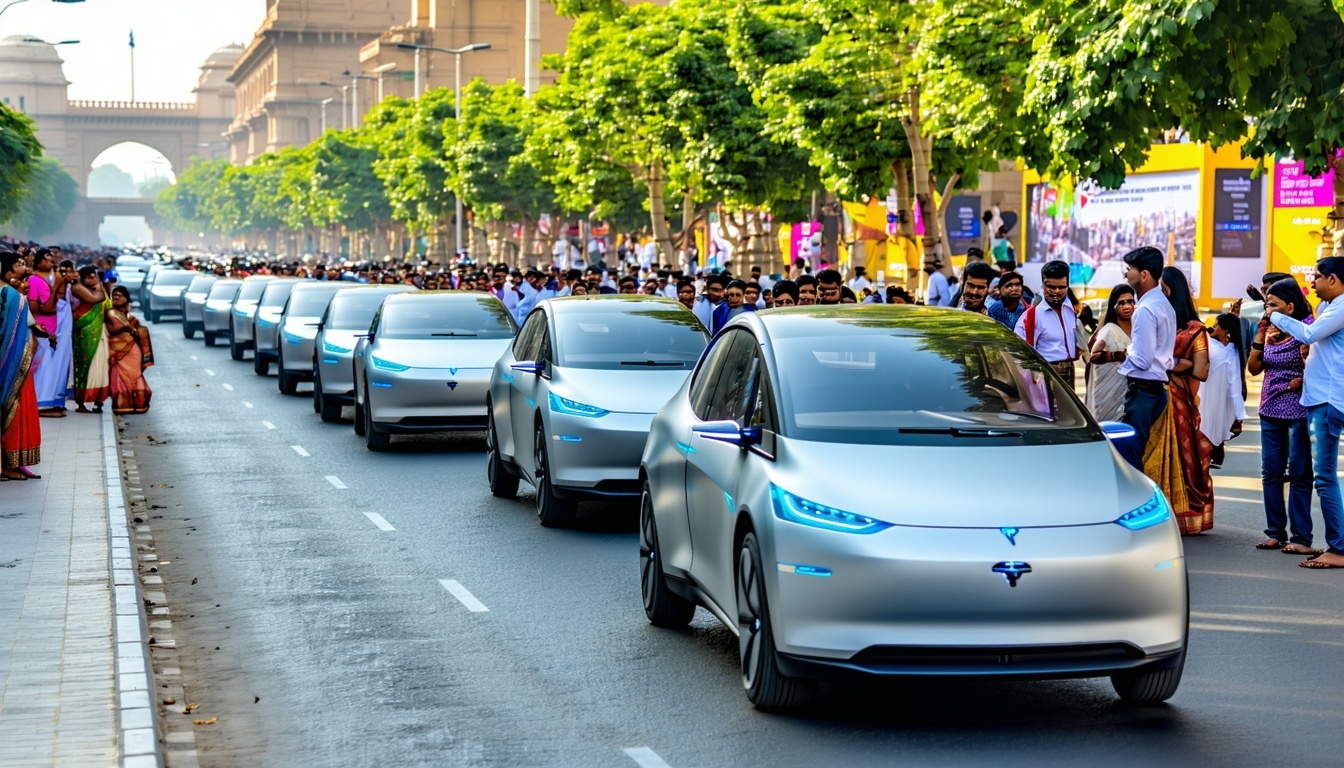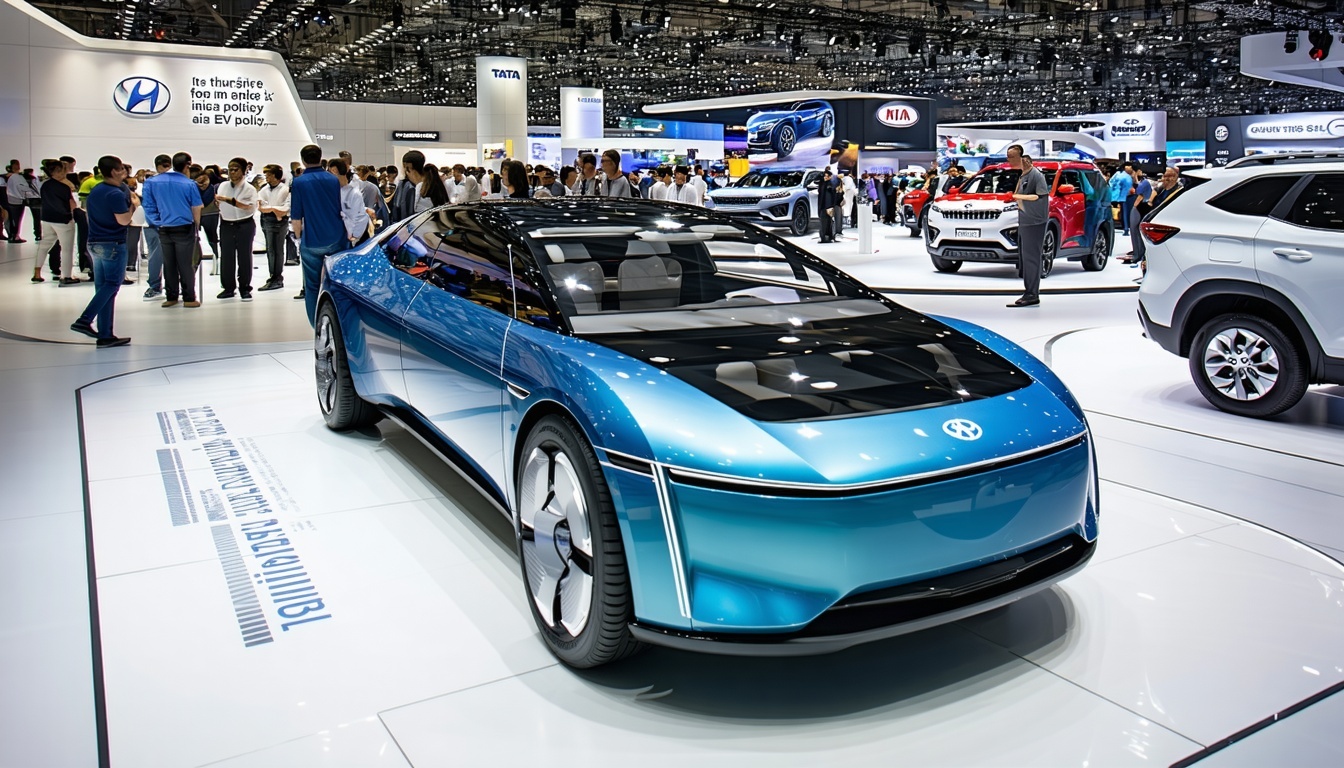
India's New EV Policy: Impacts on Tata, Mahindra, Hyundai, and More

India’s new electric vehicle (EV) policy, designed to attract substantial global investments, signals a transformative moment for the domestic EV market and all its key players:
Potential Challenges for Local Makers:
Increased Competition (Especially in Premium Segments):
- Rising Competition in Premium Segments
With the policy permitting new entrants to import up to 8,000 premium EVs annually (priced above $35,000) at just a 15% duty, the premium segment will see intensified competition. Global brands, equipped with advanced technology and established reputations, are likely to challenge the current market order. While Tata Motors and Mahindra & Mahindra have thrived in affordable EV segments, they may experience new pressures if these global entrants move down-market, or as local champions push into premium categories. Hyundai and Kia, already familiar faces in India’s premium EV scene, also face heightened competition—but stand to benefit by expanding their own global offerings locally. - Pressure on Pricing and Margins
Global automakers, leveraging cutting-edge technology and local manufacturing efficiency, may adopt aggressive pricing strategies, tightening margins for domestic players. - Talent & Resource Race
The entry of well-resourced global manufacturers raises the stakes for skilled talent in EV technology, R&D, and production, potentially driving up costs across the ecosystem.
Opportunities and Upsides for Indian Manufacturers:
- Ecosystem Acceleration
The mandate for a $500 million minimum investment and 50% Domestic Value Addition (DVA) within five years will strengthen local manufacturing and sourcing, benefiting the entire supply chain—from battery to electronics. Indian firms such as Tata AutoComp Systems and component suppliers stand poised to partner and thrive in this expanding ecosystem. - Faster Innovation and Technology Transfer
A more diverse, globally competitive landscape can catalyze Indian players like Tata and Mahindra to accelerate R&D and raise product standards, fostering a culture of innovation. This environment could also open the door to collaborations, joint ventures, and global technology transfers, driving progress across the sector. - Expanding Market & Elevated Awareness
More brands and diverse models, paired with international-standard marketing, will stimulate consumer awareness and adoption. This overall market expansion is a net positive for the entire industry, including homegrown manufacturers. - Strategic Differentiation for Indian Brands
Indian automakers can leverage their deep understanding of local consumer preferences, robust sales networks, and enduring brand loyalty to create market-specific solutions. Emphasizing value-for-money and local requirements, domestic players can continue to shape India’s mass-market EV journey even as the premium segment evolves.
Global Players Already in India: Leveraging the Policy
- Hyundai and Kia—well-financed, globally competitive—are ideally positioned to take advantage of the new import and investment framework, potentially using it to justify further domestic and export-facing expansions.
- Maruti Suzuki, preparing for its anticipated EV launch (eVX), may rethink its long-term premium EV ambitions under this new regime. With strong backing from Suzuki Motor Corp., the required financial commitments are within reach, and the policy could encourage broader investments.
- Toyota, a proponent of multi-pathway electrification, may be less immediately affected, but could engage with the policy if it chooses to enter the premium BEV space through its joint venture, Toyota Kirloskar Motor.
- Special Considerations: Tata Motors & Mahindra: These leaders are expected to maintain their dominance in the mass-market EV segment in the near term. Their ongoing priorities: rapid scaling, relentless innovation, and effective cost management. They have consistently advocated for a pure-EV policy focus, as evidenced by recent stances against including hybrids in government fleets.
Policy & Market Structure:
High revenue and investment thresholds ensure only significant, stable players enter the market, limiting volatility and fragmentation. For established local players, this creates an environment ripe for sustainable competition rather than short-lived entrants.
Level Playing Field:
The policy is open to any manufacturer meeting global criteria, whether domestic or foreign. Local champions, who have invested heavily, will have a critical eye on the policy’s enforcement to ensure balanced opportunity for all.
Key Takeaway:
India’s new EV policy will heighten competition—particularly at the premium end—but also catalyze sweeping opportunities for growth, innovation, and ecosystem development. For domestic manufacturers, agility, innovation, and customer-centric strategies will be essential to capitalize on this evolving landscape. Robust local supply chains and a global investment-driven ecosystem will amplify India’s position as a pivotal market in the global EV transition.


